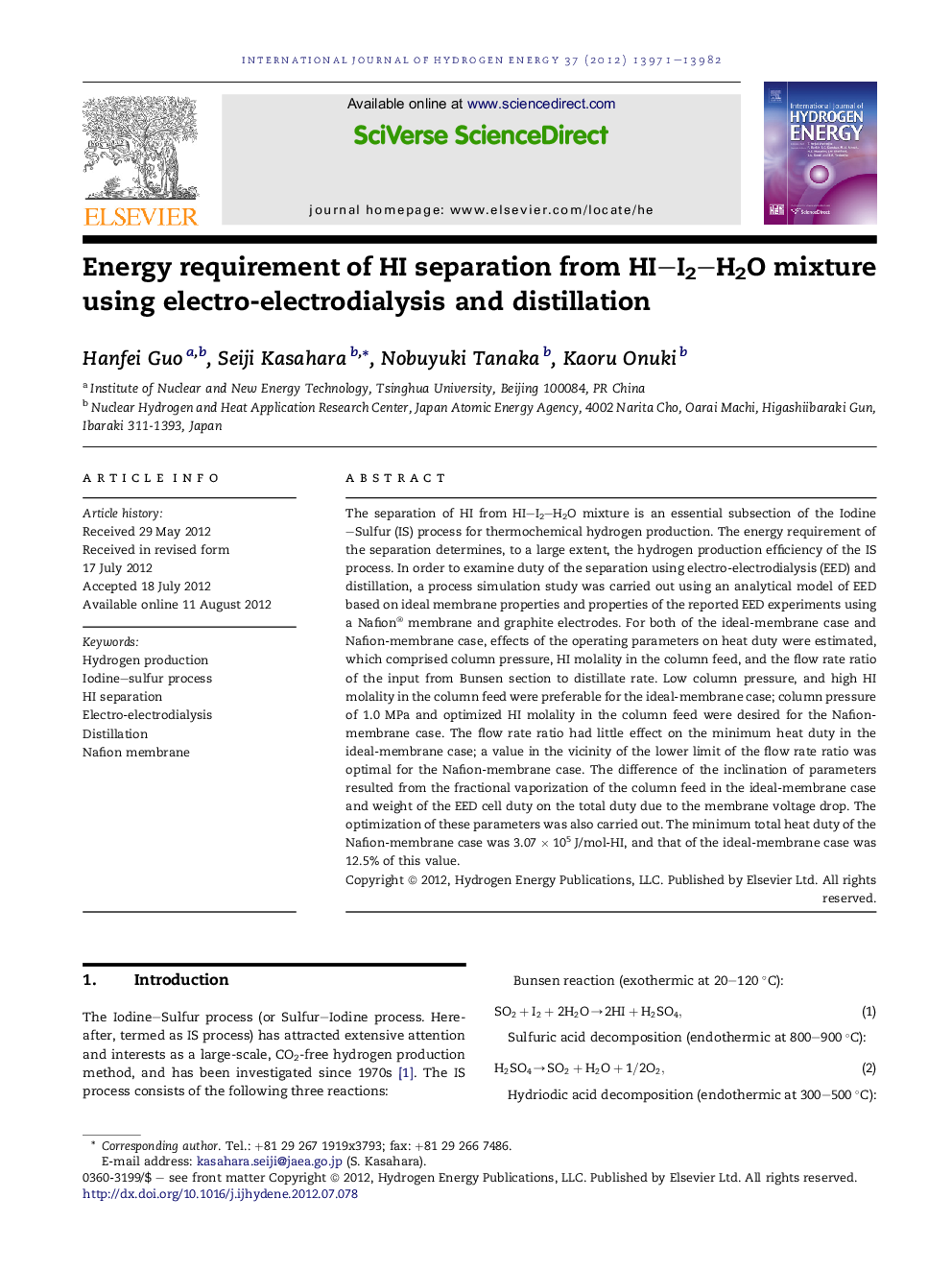| کد مقاله | کد نشریه | سال انتشار | مقاله انگلیسی | نسخه تمام متن |
|---|---|---|---|---|
| 1274739 | 1497550 | 2012 | 12 صفحه PDF | دانلود رایگان |

The separation of HI from HI–I2–H2O mixture is an essential subsection of the Iodine–Sulfur (IS) process for thermochemical hydrogen production. The energy requirement of the separation determines, to a large extent, the hydrogen production efficiency of the IS process. In order to examine duty of the separation using electro-electrodialysis (EED) and distillation, a process simulation study was carried out using an analytical model of EED based on ideal membrane properties and properties of the reported EED experiments using a Nafion® membrane and graphite electrodes. For both of the ideal-membrane case and Nafion-membrane case, effects of the operating parameters on heat duty were estimated, which comprised column pressure, HI molality in the column feed, and the flow rate ratio of the input from Bunsen section to distillate rate. Low column pressure, and high HI molality in the column feed were preferable for the ideal-membrane case; column pressure of 1.0 MPa and optimized HI molality in the column feed were desired for the Nafion-membrane case. The flow rate ratio had little effect on the minimum heat duty in the ideal-membrane case; a value in the vicinity of the lower limit of the flow rate ratio was optimal for the Nafion-membrane case. The difference of the inclination of parameters resulted from the fractional vaporization of the column feed in the ideal-membrane case and weight of the EED cell duty on the total duty due to the membrane voltage drop. The optimization of these parameters was also carried out. The minimum total heat duty of the Nafion-membrane case was 3.07 × 105 J/mol-HI, and that of the ideal-membrane case was 12.5% of this value.
► We study the flow sheet for concentrating HI in the HI–I2–H2O mixture.
► We build an electro-electrodialysis model using EXCEL.
► The performance of the electro-electrodialysis cell and distillation column is analyzed.
► The energy requirements of the flow sheets with an ideal-membrane EED and an Nafion-membrane EED are compared.
► Optimal operating parameters for the studied flow sheet are obtained.
Journal: International Journal of Hydrogen Energy - Volume 37, Issue 19, October 2012, Pages 13971–13982